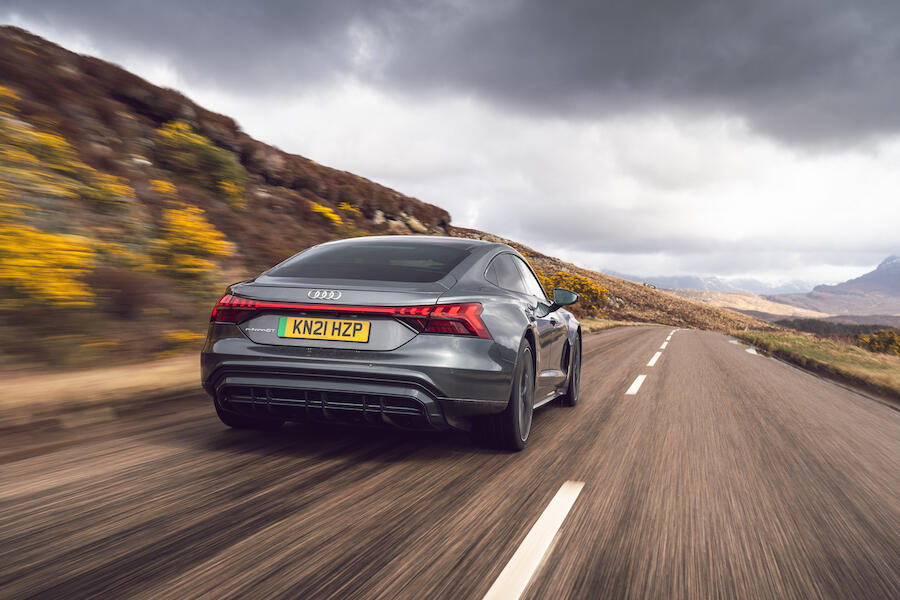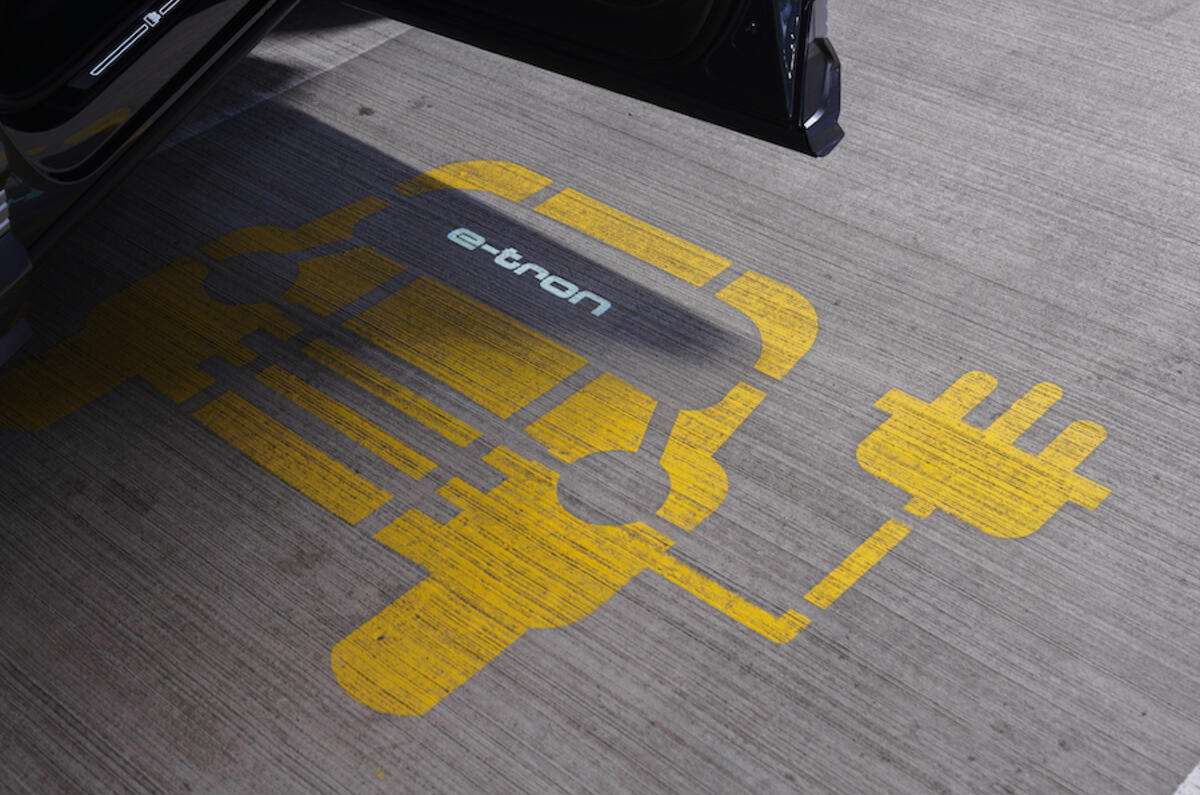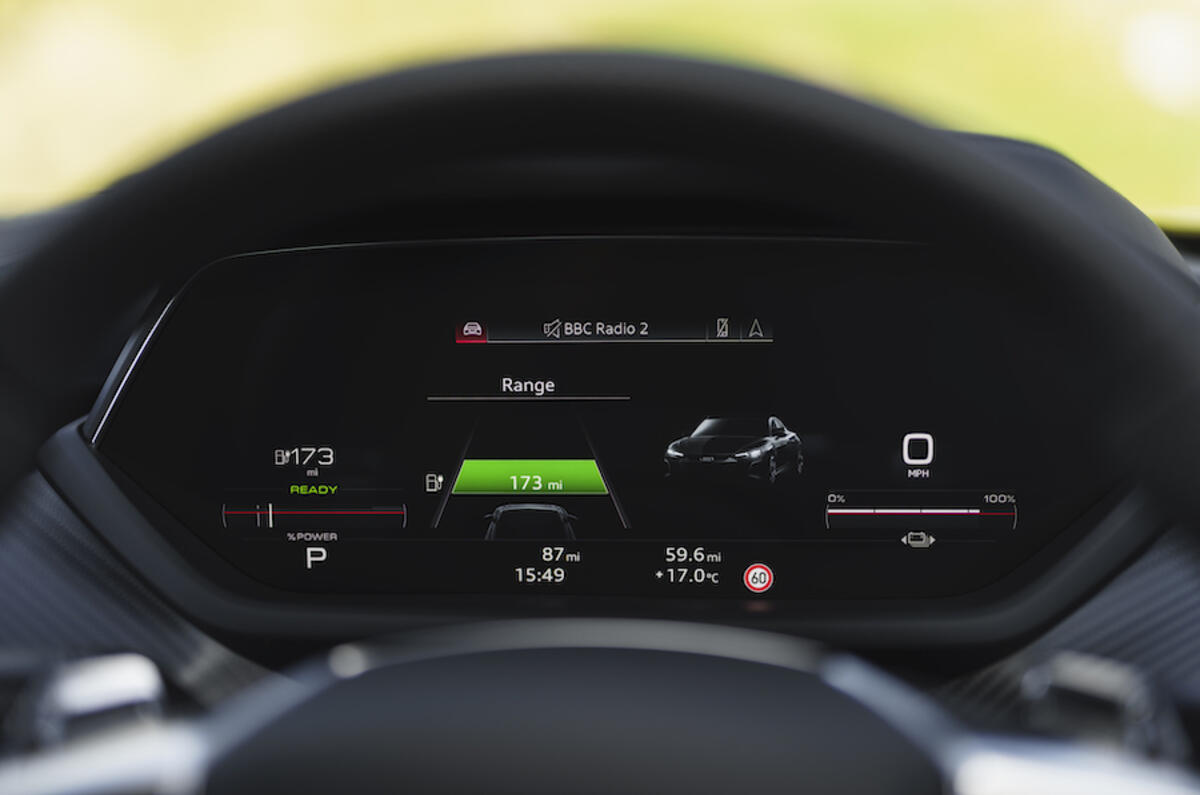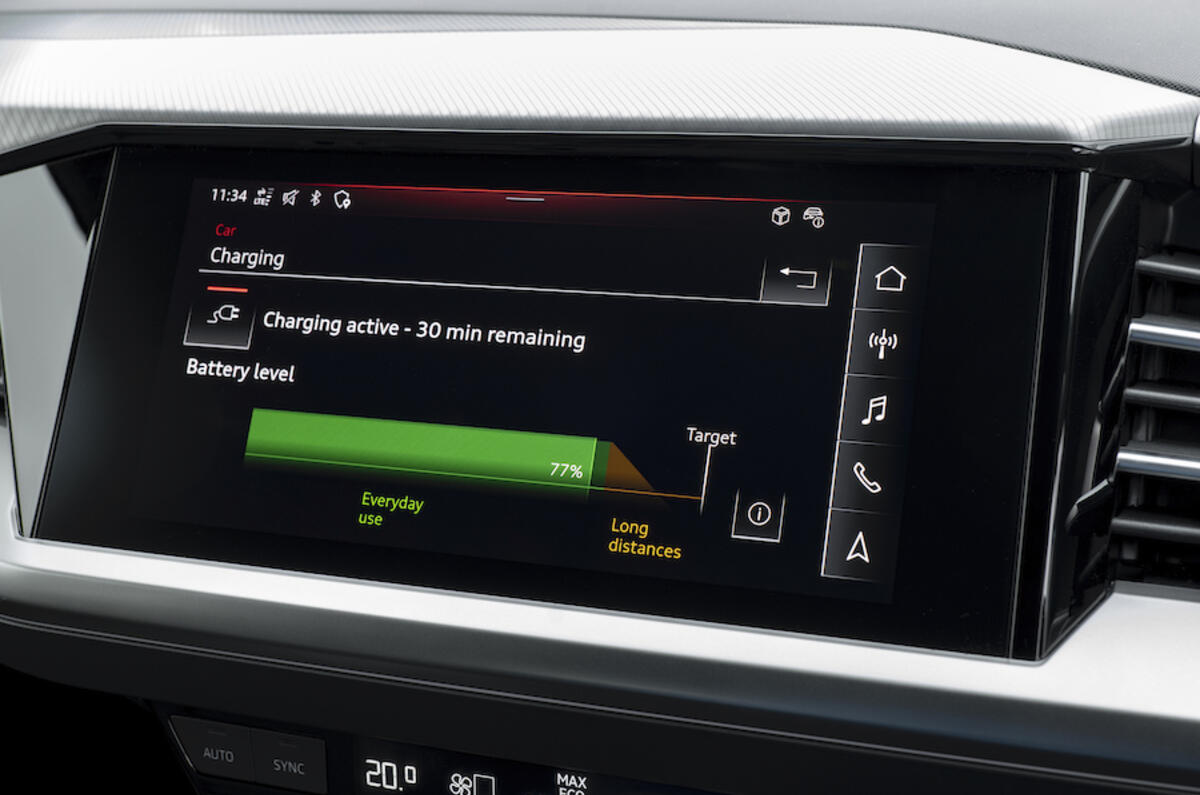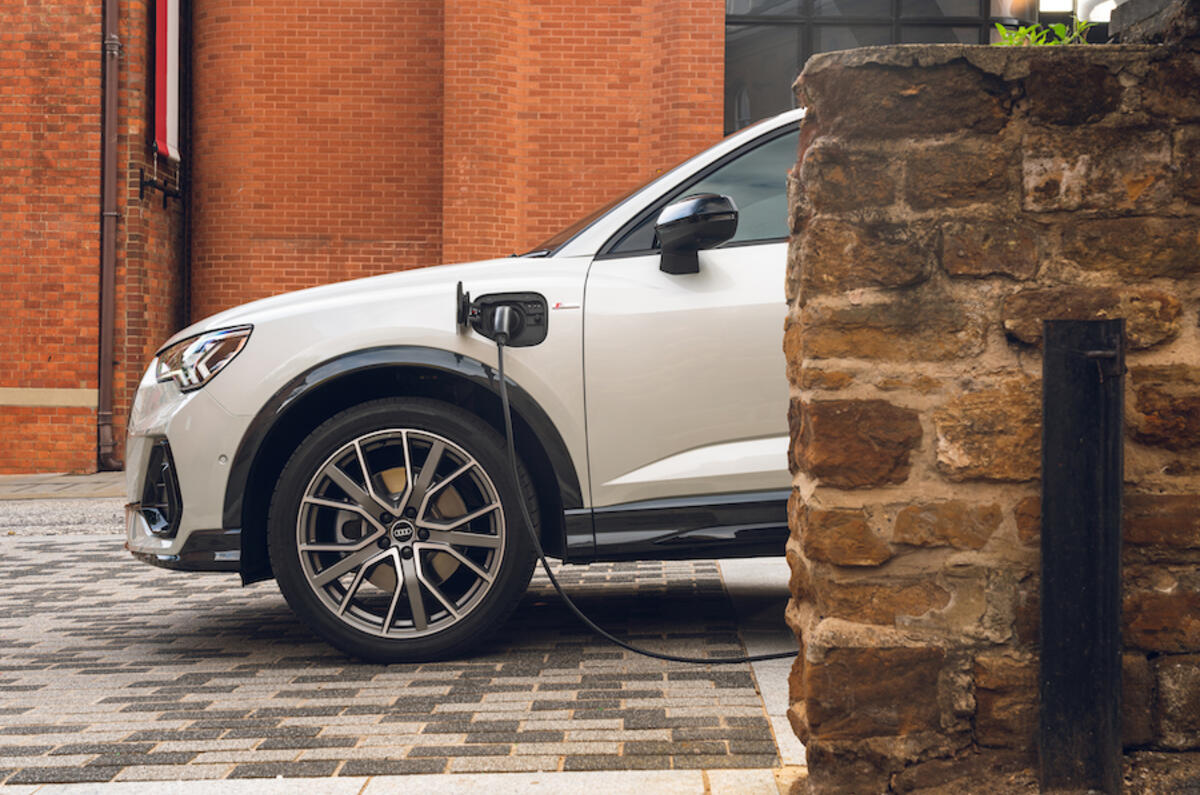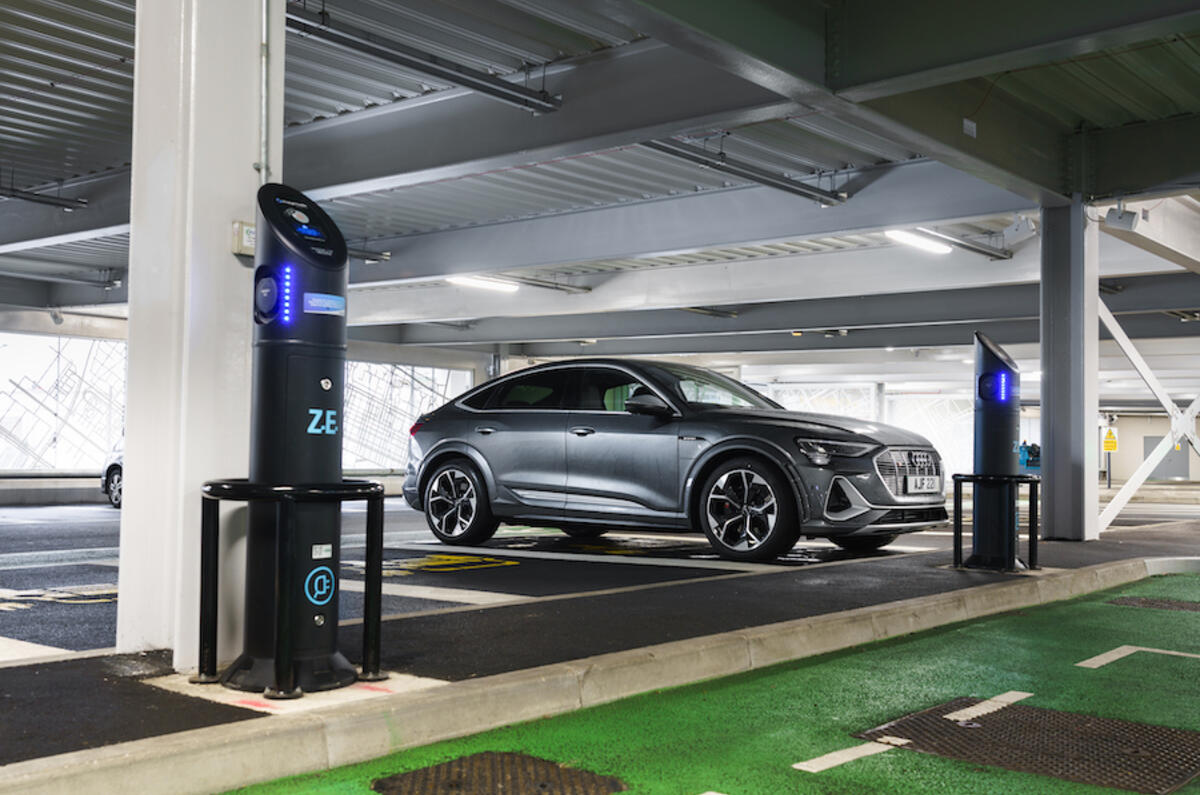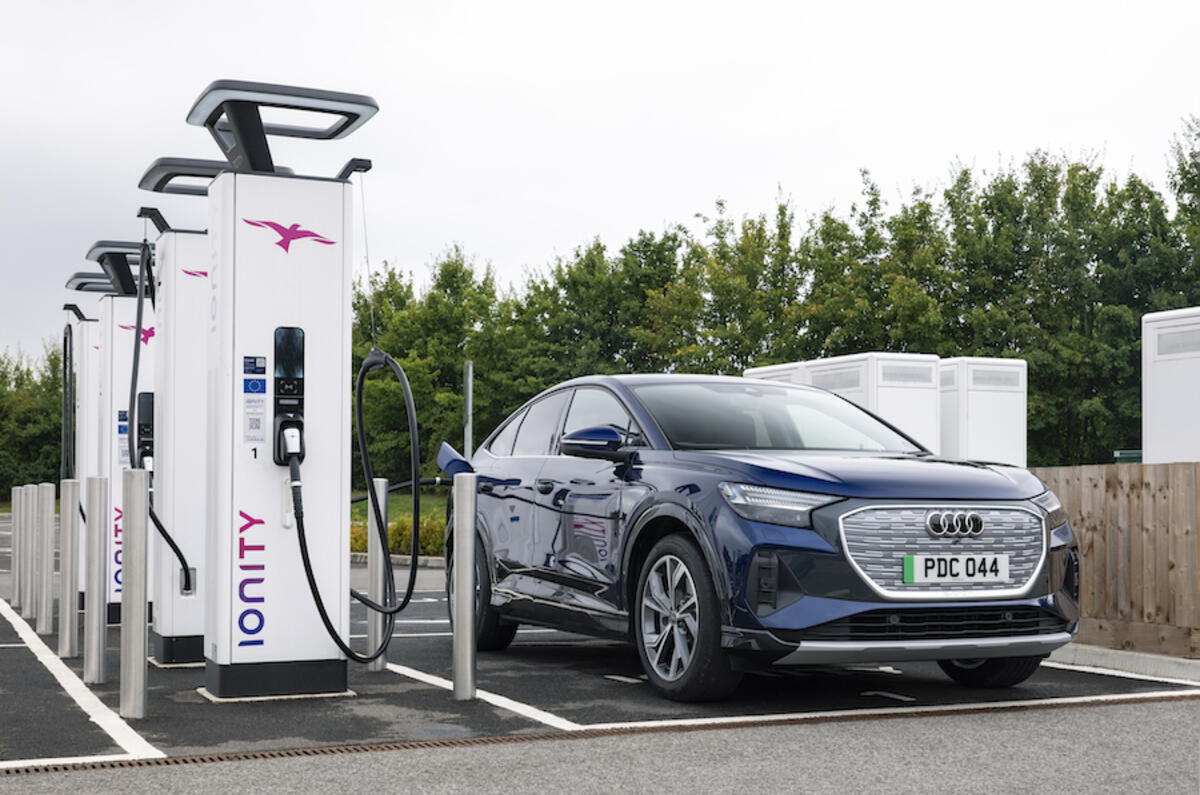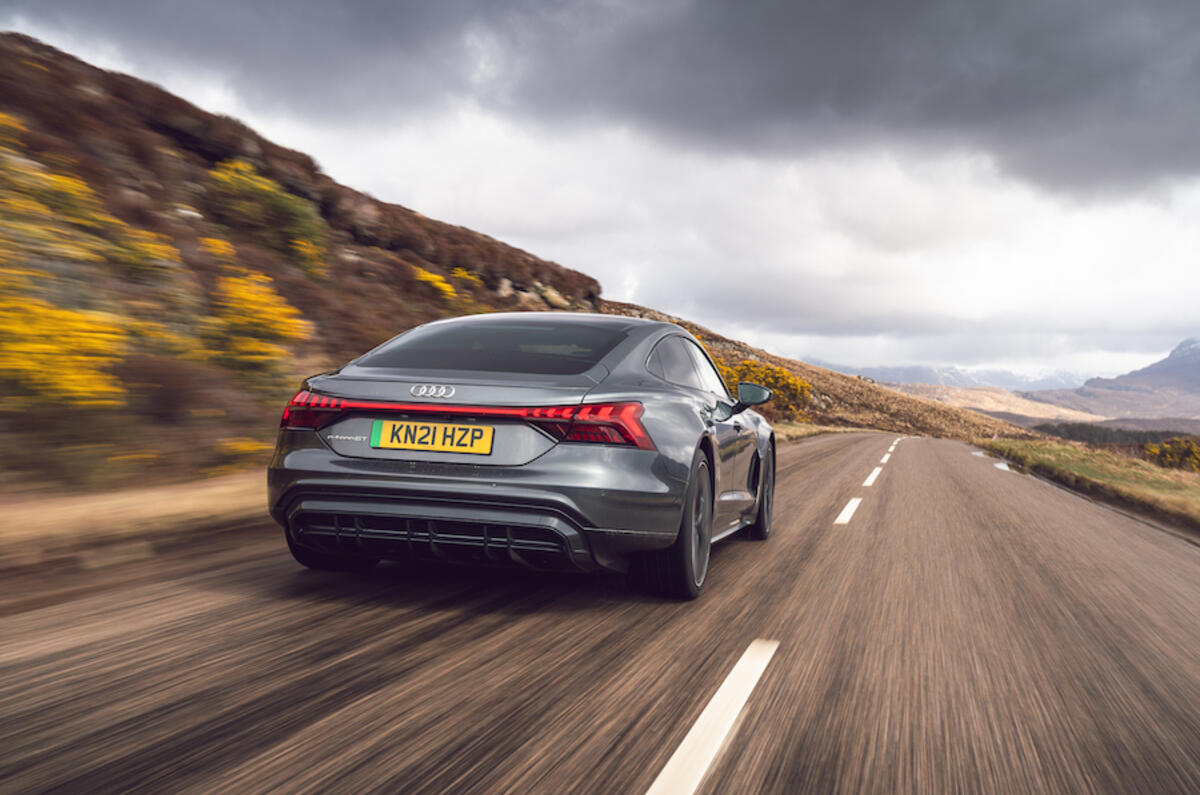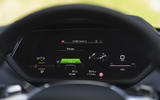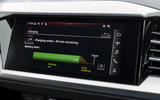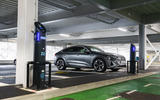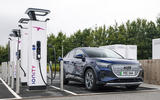Making the electric switch means a different way of powering your journeys. But don’t worry. Charging an electric car and maximising your range is easier than you think.
We’ve partnered with Audi and its fast-growing line-up of all-electric e-tron models to break down all you need to know in one simple guide. So, let’s start by dispelling one of the biggest myths…
Find out more about how Audi e-tron makes charging easy.

Range anxiety: One of the big worries about going electric is ‘range anxiety’. But this is also one of the big misconceptions about electric driving. Modern all-electric models, such as the Audi Q4 Sportback 40 e-tron SUV, offer up to 323 miles of range (WLTP). That’s roughly the distance from London to Carlisle as the crow flies.
Charging anxiety: Charging anxiety means worrying about where the nearest charger is, and how long it will take to charge. But, with over 49,000 charging points at 18,000+ locations around the UK (according to zap-map.com), and with high-speed rapid chargers making up an increasing percentage of the network, there are more options to recharge than ever before – and that number is continuing to grow fast.
Range-affecting factors: An electric car’s range is affected by several things. First: traffic conditions and the type of driving (with stop-start city and smooth flowing A-road driving being more efficient than motorway driving). Second: the weather, with cold or very hot weather decreasing range. Finally: how you use in-car tech plays its part, with in-car heating and air-conditioning being particular culprits. But, as you can pre-warm or pre-cool an Audi e-tron remotely – using the myAudi smartphone app, while it’s still plugged in – it’s easy to preserve more range for your journey.
Learn more about the myAudi smartphone app
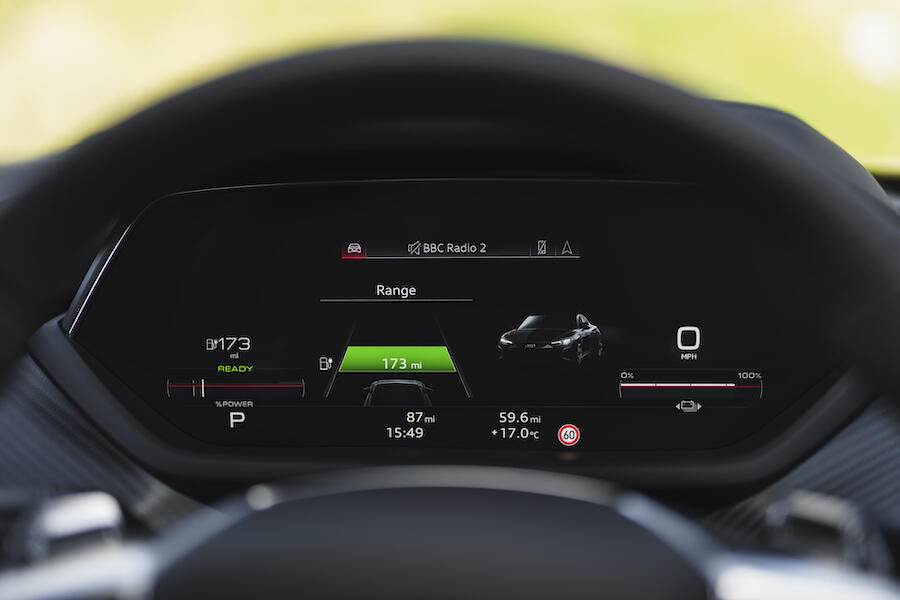
Regenerative braking: There’s another way to recharge your car – regenerative braking, which uses the electric motor to slow the car, rather than the brakes. That recaptures energy, putting it back into the battery. All-electric Audi e-tron models let you set the level of regenerative braking while driving to recapture even more energy from your drive
‘Grazing’ for charge: The best way to charge is to ‘graze’. It’s like having small snacks, rather than waiting for a big meal. Think of it like how you charge your phone. Plug your car in when you get home at night for a big, long, slow, cost-effective overnight charge when your car’s not being used to give yourself a full battery to start the next day. When you can plug your car into a charging point for a while – for example, over lunch, or when going to the gym, seeing a movie or shopping for a couple of hours – use this as an opportunity to boost your battery. On motorway trips, find a service station with rapid or ultra-rapid charging for a fast range boost when you stop for a coffee or lunch. A little charge, every so often, soon adds up.
Charging speeds: Different locations offer charging at different speeds, measured in kW. The more kW, the faster your car charges, but the more expensive it will probably be – ranging from a 3kW home charger that offers long, slow charging on cheaper overnight home rates, all the way to 150kW+ ultra-rapid public chargers that offer a big boost to your range in just a few minutes, but which tend to charge a more premium price.
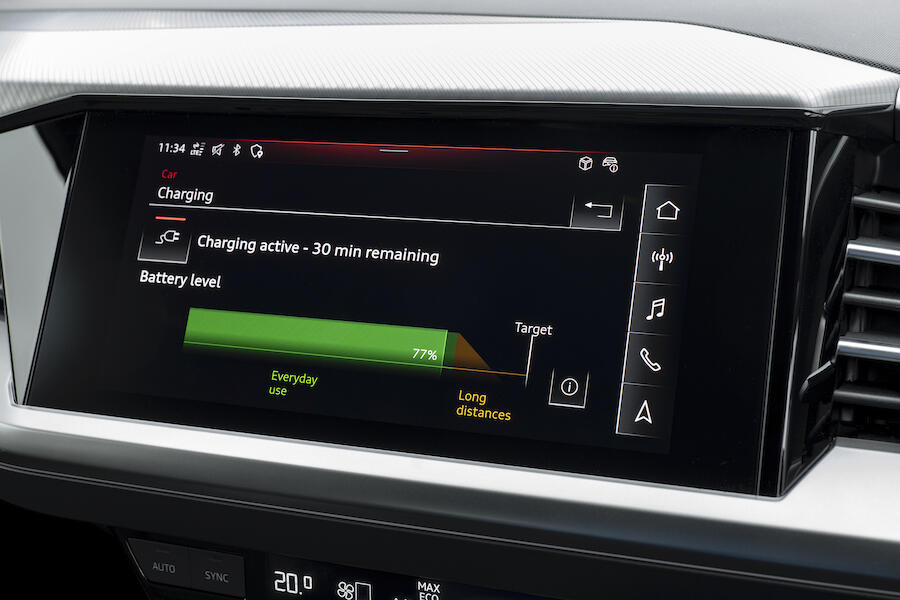
Charging times: Charging times vary depending on the charger used, the temperature and the initial battery charge. Lithium-ion batteries have a charging curve that is fast early on, but which slows as you ‘squeeze in’ charge above 80%. At home, you have the time to charge to 100%. But, when charging on-the-go, charging between 20% and 80% is the most time-efficient solution. In ideal conditions, the Audi 40 Q4 e-tron’s 82kWh battery will take around 11.5 hours to recharge overnight on a home 7kW charger, while on a 125kW ultra-rapid charger it can gain around 80 miles of range in as little as 10 minutes (barely enough time to grab a cup of coffee). It can also recharge from approximately 5% to 80% in as little as 38 minutes. Perfect for a lunch stop.
Pre-warming: Electric car batteries work best and offer more range between 20C and 30C. So, in cold weather, they tend to lose some range. Audi e-tron models can pre-warm their batteries while plugged in, ensuring you set off with the best possible range without wasting charge. You can also pre-warm or pre-cool your car’s interior remotely with the myAudi smartphone app – again, with no wasted charge and maximum range.
Charging costs: The cost of charging an electric car can vary, depending on whether you’re using a home charger, a public fast charger or a rapid or ultra-rapid charger – and how much the network charges. Some brands offer deals with home energy suppliers. For example, buying a new or approved-used plug-in hybrid or fully electric Audi, if you switch your dual fuel home energy supply to Octopus Energy (or if you already have a dual fuel supply with Octopus Energy), you will be eligible for a £90 credit to your energy bill. This could be worth up to 4,500 miles of free, green driving.
Find out more about Audi’s Octopus Energy offer.
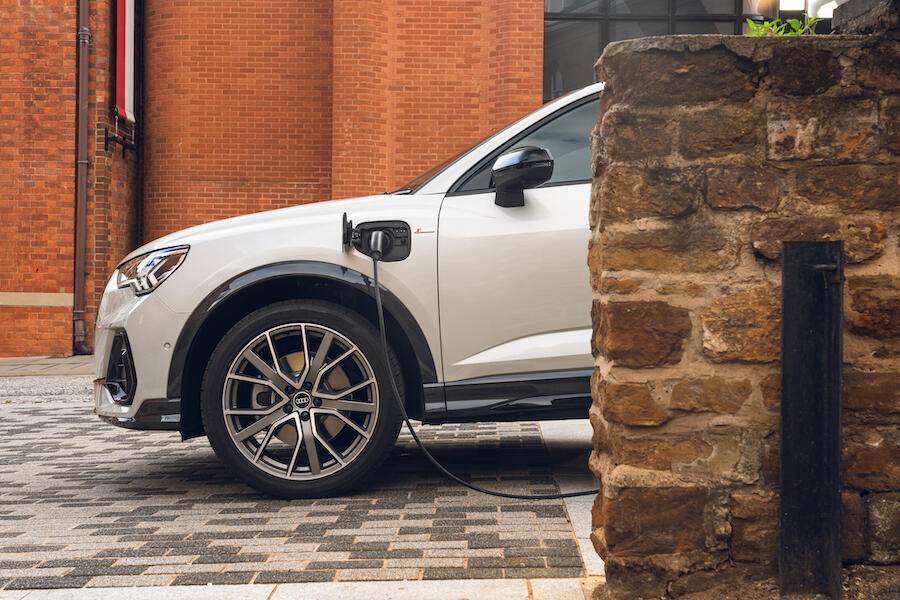
Home charging (3 kW to 22kW): Home charging is the most cost-efficient and practical way to charge an electric car. According to the RAC Foundation, the average UK car spends more than 80% of its time parked at home. So, why not make the most of long, slow charging at cheaper home rates when you’re not using your car anyway? A 3kW home charger is a cheap but slow solution. The best balance is a 7kW home charger, which will typically charge the 82kWh battery of an Audi Q4 40 e-tron in around 11.5 hours. That’s perfect for plugging in when you arrive home and having a full charge the next morning. If you want to future-proof yourself, a faster 22kW charger may make sense, as the Audi e-tron offers 22kW AC charging speeds as an option.
Find out more about the Audi Q4 e-tron
Home charger installation: Some car brands offer first-time electric buyers a great deal on home charger installation. Audi, for example, is currently offering a complimentary 7kW home charger with standard installation (worth £949 RRP) from its recommended supplier, Pod Point. It’s also worth considering whether to get a tethered or untethered home charger. A tethered charger has its own cable, so it doesn’t require you to use the portable cable from the car. But, if you change car and connection type, you’ll need to change your charger. An untethered home charger offers more flexibility.
Slow public charging (3kW AC): Many urban councils are installing slow 3kW chargers on residential streets to incentivise drivers (who don’t have a driveway) to go electric. These usually require a subscription to a provider, but they’re a great way to start your electric journey, by letting you charge overnight if you live in a flat or a terraced property without a drive.
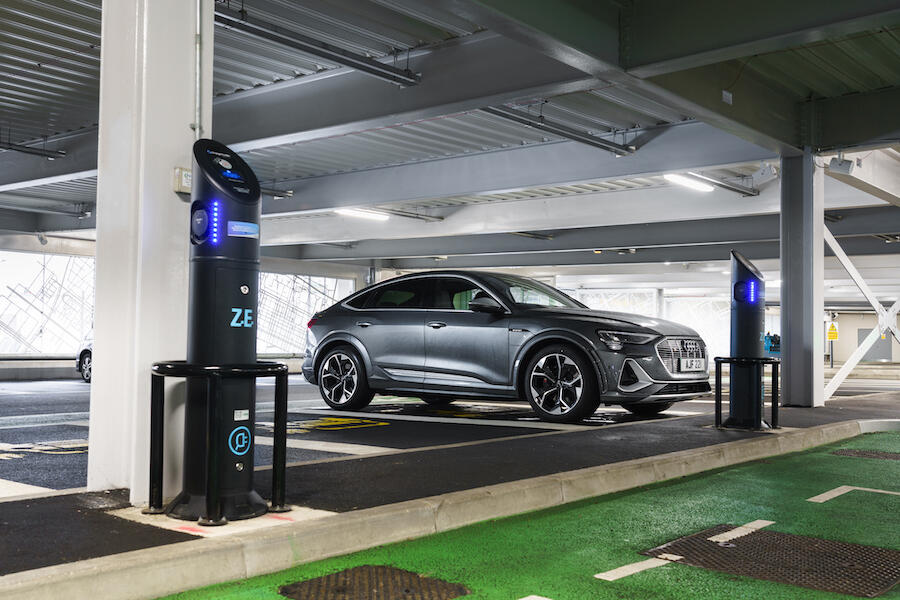
Fast public charging (7kW to 22kW AC): Fast chargers tend to be sited in destinations such as city centre car parks, supermarkets, retail parks and leisure centres, where you’re likely to park for a reasonable time – and a long, slow, cost-effective range boost makes sense.
Rapid public charging (50kW to 100kW DC): Rapid DC chargers tend to be located at motorway service stations or near petrol stations on main A-roads or at larger retailers. They’re perfect for delivering a big, fast boost of range to get you on your way quickly.
Ultra-rapid public charging (100kW to 350kW DC): The new gold standard of charging. The 400V system on new fully electric models such as the Audi Q4 e-tron offers 125kW recharging that can get you from 5% to 80% in as little as 38 minutes or can add 80 miles in as little as 10 minutes. The next-gen 800V system on the Audi e-tron GT can potentially add 62 miles of range in as little as five minutes with a 270kW ultra-rapid charger. There are currently over 1100 ultra-rapid charging points around the UK, and the network is growing fast.
Find out more about the Audi e-tron GT
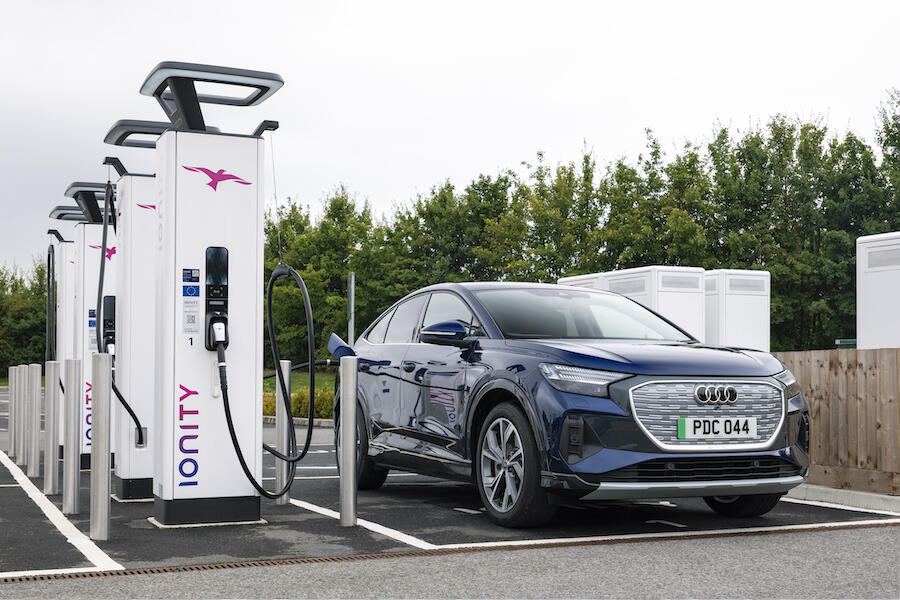
Charging providers and tariffs: Across the UK charging network, there are a wealth of providers, each with their own tariffs and rates. Some offer pay as you go; others offer free or cheaper charging with a subscription. With a bit of research and experience, you’ll find which works best for you. Audi has made things easy with its e-tron Charging Service (eCS) – one card which gives plug-in hybrid and electric Audi drivers access to thousands of charging points across the UK and Europe. It covers almost 75% of UK public charging points, including leading operators such as BP Pulse and Pod Point. For e-tron customers Audi is also giving away one year’s free subscription to the Transit Tariff, as well as a £150 charging credit.
Learn more about Audi’s e-tron Charging Service (eCS)
Charging cables: There are several types of charging cables, using different plug and connector types (sort of like how different smartphone brands use different cables). Japanese car brands have tended to favour CHAdeMO, while European manufacturers – including Audi – use Type 2 and CCS systems, which are now more common. Most public charging stations feature both types, but it’s worth double-checking before you visit.
Type 2 charger: Primarily used for slower AC home and public charging for both plug-in hybrids and fully electric models, Type 2 is the standard choice for most European car brands – including Audi.
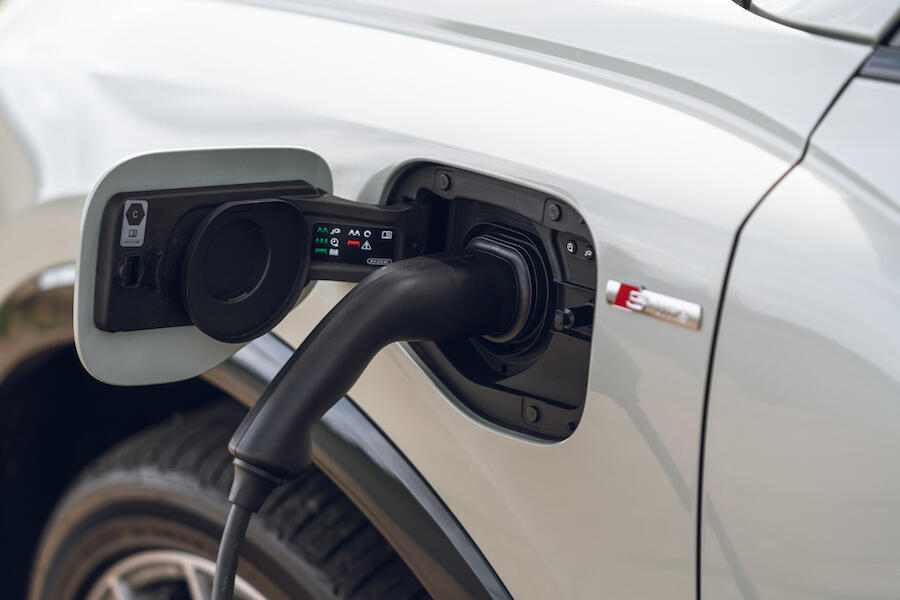
CCS (Combined Charging System): The most common charging system, and the standard for most fully electric cars from European manufacturers – including Audi. It combines a Type 2 plug for slower AC home charging and fast public charging, as well as a DC plug for rapid or ultra-rapid public charging. This makes it an incredibly versatile one-size-suits-all solution.
CHAdeMO: A type of fast AC charging connection, often favoured by Japanese manufacturers as an alternative to the European CCS (Combined Charging System). Most public charging stations offer a choice of both CHAdeMO and CCS, but it’s always worth checking. Fun fact: CHAdeMO stands for ‘Charge de Move’ or ‘charge for moving’.
Find out more about how Audi e-tron makes charging easy.
